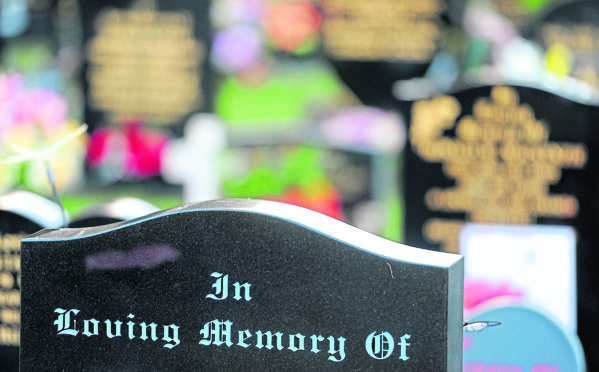Local authorities have admitted they are under “pressure” to act on cemetery provision but insisted that “plans are in place” for many sites.
Councils took over responsibility for most graveyards from the Church of Scotland in 1925, but now many are running out of space, despite up to 68% of Scots now opting for cremations.
Councillors in Moray considered a new strategy for cemeteries last month, including the introduction of a new “hierarchy”.
>> Keep up to date with the latest news with The P&J newsletter
Elgin, Forres, Buckie, Lossiemouth and Keith would be primary locations, supported by smaller cemeteries in Cullen, Aberlour, Dufftown, Tomintoul, Rothes and Lhanbryde.
In the next 10 years, it was noted that Broomhill in Keith and Lossiemouth would require extensions, while in Elgin a new cemetery is “necessary”, although the £3million of funding to deliver the plans is yet to be “identified”.
Moray Council also named 23 cemeteries which it does not intend to extend, even when they are full. Officials warned that limited finances meant that “the option of stepping back from providing new cemeteries is a consideration”.
The local authority also discussed the “filling in of non-strategic paths” to make more room for graves at some sites.
A council spokeswoman said: “We’re working to ensure we have sustainable cemetery provision which includes the management and maintenance of our 63 cemeteries.”
Despite its own figures showing Kilvean Cemetery in Inverness had just 26 unsold graves remaining, Highland Council said that has a “huge amount of space” at the site.
It added that there were “ongoing discussions” aimed at extending provision at Alness.
Mitchell Hill in Dingwall should have space for burials for another eight years, according to the council, and Kingussie should last another 10 years, at which point extensions will be considered.
Ullapool and Portree have also had recent extensions, as have Glen Nevis in Fort William and Tain.
Highland Council’s vice-convener Allan Henderson said: “We do have pressure at some cemeteries but certainly up until now we have been good at finding emergency funding to make sure extensions are completed in time, or we find a suitable alternative.”
However, Alasdair Rhind, a local funeral director and councillor for Tain and Easter Ross, said: “I sometimes feel the council isn’t putting enough capital resources into burial ground extensions because at the end of the day they are making money by selling lairs.
“I think the council, and all councils in Scotland, need to take a more proactive view on it.”
In Aberdeenshire, a new cemetery for Ellon is among the plans being progressed.
A local authority spokeswoman said: “We acknowledge that there are looming issues in some areas in relation to cemetery capacity.
“The council are actively working on a capital programme to extend some cemeteries and are working with colleagues in Estates to identify additional sites in other areas.”
